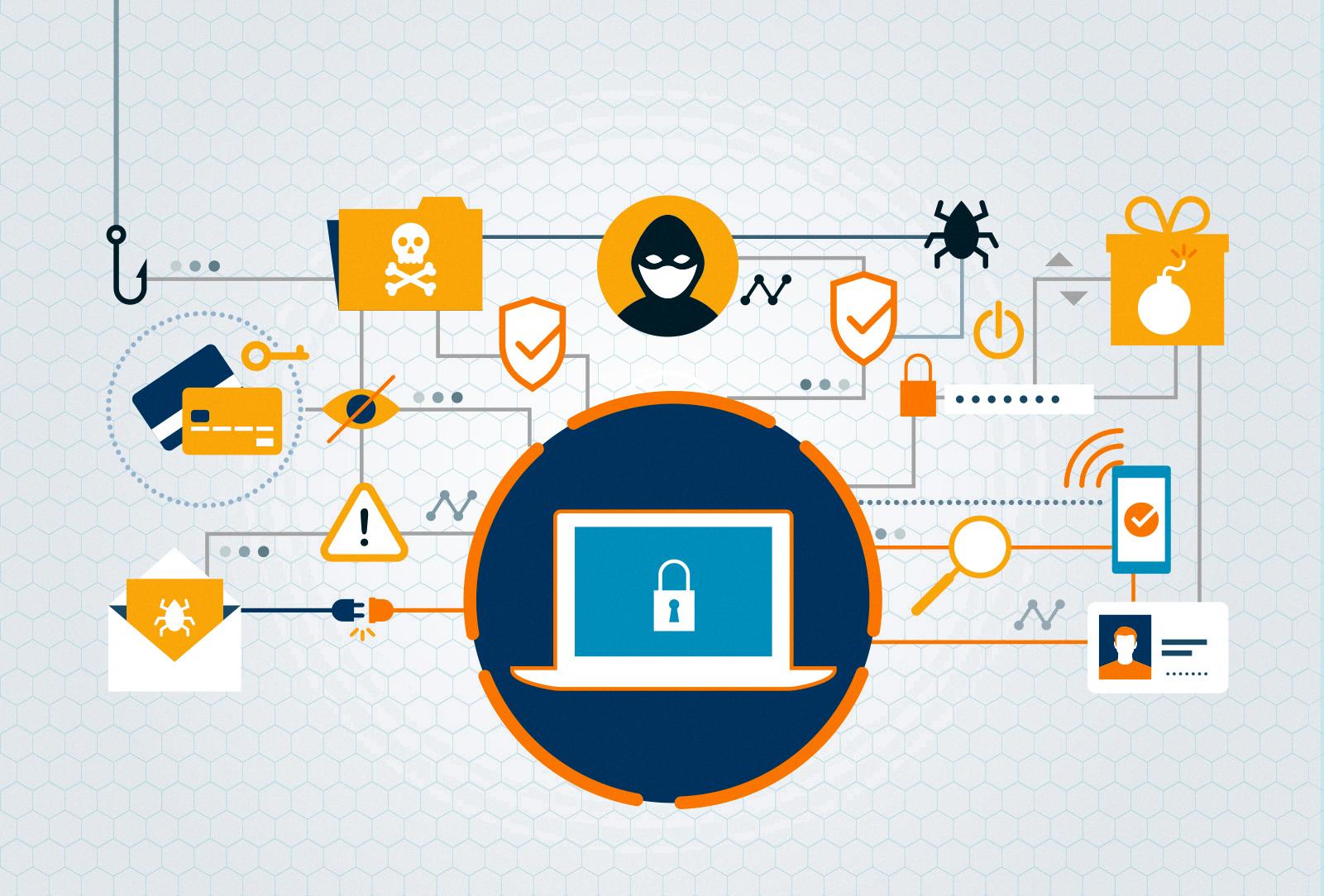Network disaster recovery planning is a critical component of any business’s IT infrastructure. It ensures that the business can continue to operate in the event of a network failure or other catastrophic event. A well-crafted network disaster recovery plan should include specific steps, procedures, and resources necessary to restore network connectivity and operations as quickly as possible.
The first step in any effective network disaster recovery plan is to create a disaster recovery team. The team should include key personnel from each department of the organization, with each member responsible for certain aspects of the plan. This team will be responsible for creating and executing the plan in case of an emergency.
The next step is to identify and assess potential disasters that could affect the business’s network infrastructure. This may include natural disasters such as floods or fires, malicious attacks such as cyber-attacks or viruses, hardware failures, power outages, or other unexpected events. The team should evaluate each risk and determine its likelihood of occurring as well as its potential impact on the organization’s operations.
Once potential risks have been identified and assessed, the team should determine which applications, documents, and other resources are critical to maintaining operations in the event of a disaster. This includes hardware such as servers and routers, software applications such as databases or web servers, data files such as customer records or financial information, and communication systems such as phones or email servers.
In addition to identifying critical resources that need to be backed up and stored offsite in case of an emergency, the team should also specify backup procedures for these resources. This includes determining how often backups are created; where they are stored; who has access to them; how quickly they can be restored; what type of encryption is used for security; and any additional precautions needed for protecting sensitive data from unauthorized access or corruption during storage or transfer.
Finally, it is essential that all personnel involved understand the restoration procedures that will be followed in case of a disaster so that they know what steps need to be taken to get things back up and running again quickly after an emergency situation has occurred.
Having an effective network disaster recovery plan in place can drastically reduce damage caused by unforeseen events while ensuring that your business remains operational during difficult times. By following these steps you can ensure that your organization is prepared if an emergency strikes unexpectedly.

Source: equivant.com
Including in a Disaster Recovery Plan
A disaster recovery plan should include a range of components to ensure an effective response if a disaster occurs. The plan should include clear goals and objectives which outline the overall strategy for responding to and recovering from a disaster. It should also include details on personnel who are responsible for executing the plan, as well as those who have access to it. Furthermore, an IT inventory should be created that includes all systems and applications, their locations, and any other relevant technical information.
Additionally, the plan should outline comprehensive backup procedures that ensure all necessary data is securely backed up offsite in case of a disaster. Disaster recovery procedures should also be established, which detail how systems will be restored following a disaster event. Any necessary disaster recovery sites or alternate locations for system restoration should also be included in the plan. Finally, detailed restoration procedures should be provided which explain how systems will be restored following a successful backup and recovery process.
Five Major Elements of a Typical Disaster Recovery Plan
A typical disaster recovery plan should include the following five major elements:
1. Create a Disaster Recovery Team: This team should be responsible for preparing and managing the recovery process. It should include members from each department of the organization, as well as key stakeholders who can provide guidance and expertise.
2. Identify and Assess Disaster Risks: The team should analyze potential disasters to determine what threats may exist and what effects they could have on operations. This evaluation process should consider both natural disasters and man-made issues, such as cyber-attacks or power outages.
3. Determine Critical Applications, Documents, and Resources: It is important to identify which applications, documents, or resources are necessary for the organization to continue functioning during a disaster situation. These items should be prioritized based on their importance so that they can be recovered quickly in the event of an emergency.
4. Develop Backup Strategies: The team must create procedures for regularly backing up data and storing it either on-site or off-site in a secure location. Additionally, it is important to develop a detailed plan for restoring data from backups if needed in order to minimize downtime during a disaster.
5. Implement Testing Regularly: Regular testing of the disaster recovery plan is essential in order to ensure that all components are functioning properly and that any changes are accounted for in the plan’s design. This testing should also include simulations of various disaster scenarios so that personnel are prepared to respond effectively if an event actually occurs.
Carrying Out Disaster Recovery in Networking
Network disaster recovery is a critical process that should be carried out as soon as possible after a network failure. The goal of disaster recovery is to restore network connectivity as quickly as possible with minimal disruption to business operations. To ensure successful network disaster recovery, there are several steps that must be taken:
1. Assess the extent of the damage: Before beginning any recovery efforts, it is important to assess the extent of the damage and determine what resources are affected by the failure. This will help to identify which parts of the network need to be restored and allow you to plan accordingly.
2. Identify responsible personnel: Allocate personnel who will be responsible for carrying out the recovery process. It is important that this personnel have experience in handling similar scenarios and are familiar with your specific network architecture and infrastructure.
3. Develop an action plan: Create a detailed step-by-step plan for restoring your network infrastructure, including identifying any necessary hardware or software components that may need to be replaced or upgraded during the process. This plan should also include information about how data will be backed up before any changes are made.
4. Execute your plan: Once you have established a clear action plan, it is time to begin restoring your network infrastructure according to the steps outlined in your plan. Ensure that all personnel involved in this process understand their responsibilities and follow all safety protocols while working on restoring your system.
5. Test and verify results: After completing all of the necessary steps in the restoration process, it is important to test and verify that everything has been successfully restored before allowing users back onto your network system.
By following these steps, you can ensure successful disaster recovery when dealing with networking issues or failures!
The Importance of Having a Network Disaster Recovery Plan
Having a network disaster recovery plan is essential to ensure business continuity and maintain data integrity when a system failure or disaster occurs. It is important to have a plan in place to minimize the consequences of a disaster, such as data loss, downtime, and financial losses. A well-crafted DR plan can help organizations prepare for any potential system failure by outlining specific procedures for restoring operations as quickly as possible. Additionally, a DR plan can provide guidance on how to prevent future disasters and protect critical data. Having an organized DR plan can also help organizations maintain compliance with industry regulations and standards. Ultimately, having a network disaster recovery plan helps organizations protect their assets while ensuring they are able to continue providing services in the event of an emergency.
Components of a Disaster Plan
1. Mitigation: This is the phase of a disaster plan that includes strategies to reduce or prevent damage, such as conducting risk assessments, creating emergency evacuation plans, and implementing protective measures.
2. Preparedness: This is the phase that involves taking proactive steps to ensure safety and security during a disaster, such as creating supply kits, establishing communication networks, and building partnerships with local emergency response organizations.
3. Response: This is the phase that involves responding to an emergency situation by activating emergency plans and protocols, providing medical care and assistance, and mobilizing resources.
4. Recovery: This is the phase that follows a disaster and focuses on rebuilding affected areas, restoring essential services, and providing long-term assistance to those affected by the event.
The Three Main Items in Disaster Recovery
The three main items in disaster recovery are assessment, restoration, and recovery. Assessment is the process of determining the scope and impact of the disaster, identifying critical systems and processes that need to be restored, and developing an effective recovery plan. Restoration involves restoring systems and processes back to their original or most recent working state. Recovery is the process of rebuilding or replacing systems and processes to ensure they are resilient against future disasters.
Examples of Disaster Recovery
Disaster recovery is the process of restoring data and/or systems to their original state after a natural disaster, malicious attack, or system failure. It also involves a plan to ensure that operations can continue in the face of any disasters that occur.
One example of a disaster recovery strategy is data backup. This involves creating multiple copies of important business files and databases and then storing them in a secure off-site location. That way, if something happens to the primary data source, businesses can quickly restore the information from the backup. Other types of disaster recovery solutions include cloud computing, virtualization, and business continuity planning.
Cloud computing allows businesses to store their data on remote servers hosted by third-party providers. The benefit here is that even if something happens onsite, companies can access their information from anywhere with an internet connection. Virtualization uses software to create virtual machines that can be used for testing and development purposes without requiring physical hardware. Finally, business continuity planning includes steps such as risk assessment, establishing communication protocols, and developing response strategies for various scenarios.
Conclusion
In conclusion, a network disaster recovery plan is essential for any organization that relies heavily on its computer networks. By having a comprehensive plan in place, organizations can ensure that their systems are quickly restored to operational status in the event of an unexpected system failure. The plan should include a recovery time objective (RTO) and a recovery point objective (RPO), as well as the steps necessary to restore network connectivity and identify the people responsible for conducting the network disaster recovery. Having such a plan in place will help organizations minimize potential damages or disruptions, so they can get back up and running as soon as possible.








